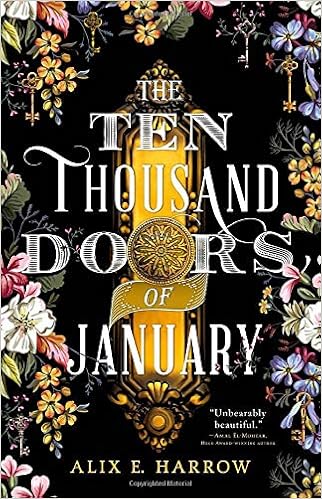I learned from reading The Once and Future Witches that Ms. Harrow is an excellent storyteller; a writer capable of weaving delicate wisps of plot and story that intertwine innocently until they don’t.
I was hesitant, however to pick up The Ten Thousand Doors of January because it was her first novel, and I just enjoyed Witches so damn much.
Boy am I a moron.
The Ten Thousand Doors of January is the story of January Scallar: the semi-ward of a wealthy Vermont businessman/collector/eccentric. January doesn’t really fit in this world. She is basically holed up in Mr. Locke’s Vermont mansion while her father travels the world building up Locke’s collections of interesting artifacts.
As the story progresses, we start to learn that there is quite a bit more going on surrounding Mr. Locke, January’s father, and January herself. There are a multitude of worlds hidden behind random doors all over this world.
As I do not like to spoil any novel I read, I’m going to leave the synopsis at that.
As I mentioned earlier, what strikes me in reading Ms. Harrow’s works is the rolling and organic way her storytelling develops. Both of the works I’ve read from her, and especially this one, showcase and absolute love of the storytelling tradition and her adroit way of pulling in the reader as if in conversation. I absolutely love this style and I wish there was more of it.
The sensory descriptions in this book absolutely lend to the style. All of the smells, sounds, tastes and textures come to life in a flowing language that gently cradles the reader like a warm hearth. Cheesy description, but apt.
I know that Ms. Harrow has stated a few times that she has no plans of revisiting the tales of January and the multitude of doors, but, with so many doors, who says that intentions have to be stated?









